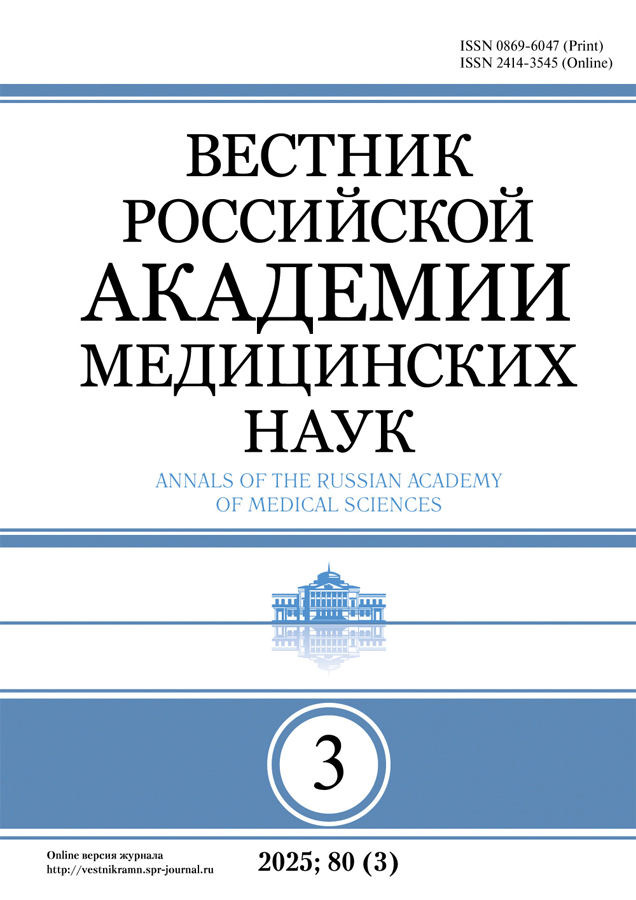BRAIN BIOELECTRIC ACTIVITY FORMING IN ADOLESCENTS LIVING IN DIFFERENT ENDEMIC GOITER AREA OF EUROPEAN NORTH
- Authors: Demin D.B.1
-
Affiliations:
- The Institute of Environmental Physiology, Ural Branch, Russian Academy of Sciences, Arkhangelsk, Russian Federation
- Issue: Vol 68, No 7 (2013)
- Pages: 32-35
- Section: PEDIATRICS: CURRENT ISSUES
- Published:
- URL: https://vestnikramn.spr-journal.ru/jour/article/view/165
- DOI: https://doi.org/10.15690/vramn.v68i7.709
- ID: 165
Cite item
Full Text
Abstract
Northern European regions are goiter endemic and iodine-deficient areas, and also differ in the degree of extreme weather conditions in the Polar and Subpolar latitudes. The age formation of the nervous system in adolescents depends on these discomfort climatic factors. Aim. The study of functional brain activity depending on the thyroid profile in adolescents living in the European North. Patients and methods. 211 adolescents (male and female) aged 15–16 years living in the Subpolar (64°30' N) and Polar (67°40' N) Russian regions were observed. An electroencephalogram in a state of quiet wakefulness with eyes closed monopolar 16 standard leads was recorded. Electroencephalogram characteristic were performed by the values: of the wave amplitudes, index and absolute spectral power in each frequency band: 4–7 Hz, 8–12 Hz and 13–24 Hz. In serum samples by immune-enzyme assay thyrotropin, triiodothyronine and thyroxine levels were determined. All the described changes were statistically significant at p <0,05–0,001. Results. A higher activity of diencephalic subcortical brain structures, expressed in the form of increased θ-activity and photic driver reactions were determined in adolescents living in Polar region. Background thyroid status determines the age formation of brain activity. In adolescents living in the Polar region a high concentration of thyrotropin in the blood and the availability of significant relations with thyroid hormones levels with a brain θ-activity were detected. In adolescents living in Subpolar region is more intense age optimization of neural processes, as well as the greatest number of neuro-endocrine relationships.
Keywords
About the authors
D. B. Demin
The Institute of Environmental Physiology, Ural Branch, Russian Academy of Sciences, Arkhangelsk, Russian Federation
Author for correspondence.
Email: denisdemin@mail.ru
PhD, Senior Research Worker, Laboratory of Biorhythmology, Institute of Environmental Physiology, Ural Branch, RAS. Address:163000, Arkhangelsk, Lomonosov av., 249; tel.: (8182) 65-29-92
References
- Dedov I.I., Sviridenko N.Yu. The strategy to eliminate of iodine deficiency diseases in RF. Problemy endokrinologii = Problems of Endocrinology. 2001; 47 (6): 3–12.
- Sibileva E.N., Zubov L.A. Features of endemic goiter in children and adolescents in the Nenets Autonomous Okrug. Ekologiya cheloveka = Journal Human Ecology. 2011; 7: 10–14.
- Kasatkina E.P. Iodine deficiency disorders in children and adolescents (plenary lecture). Probl. endokrinol. = Problems of Endocrinology. 1997; 43 (3): 3–7.
- Rachev R.R., Eshchenko N.D. Tireoidnye gormony i subkletochnye struktury [Thyroid hormones and subcellular structures]. Мoscow: Meditsina. 1975. 294 p.
- Bernal J., Nunez J. Thyroid hormones and brain development. Eur. J. Endocrinology. 1995; 133 (4): 390–398.
- Farber D.A., Dubrovinskaya N.V. Functional organization of the developing brain (age-specific regularities). Fiziologiya cheloveka = Human Physiology. 1991; 17 (5): 17–27.
- Shcheplyagina L.A., Makulova N.D., Maslova O.N. Iodine and intellectual development of a child. RMZh = Russian Medical Journal. 2002; 7: 358–363.
- Demin D.B., Poskotinova L.V. Age dynamic of hormonal parameters in children living in different latitudes of the European North. Rossiiskii fiziologicheskii zhurnal im. I.M. Sechenova = I.M. Sechenov Physiological Journal. 2008; 94 (1): 109–116.
- Demin D.B., Poskotinova L.V. Photodependent changes of the endocrine system activity in adolescents living in different latitudes of the European North. Aviakosmicheskaya i ekologicheskaya meditsina = Aerospace and environmental medicine. 2008; 42 (4): 43–47.
- Kubasov R.V., Kubasova E.D. Iodine provision of the population in the Arkhangelsk region. Gigiena i sanitariya = Hygiene and Sanitation. 2008; 3: 14–16.
- Blagosklonova N.K. Otsenka patologicheskikh znakov na EEG detei i podrostkov [Estimation of pathological signs on the EEG of children and adolescents]. Мoscow: Meditsina. 1994. 128 p.
- Frenkel' G.M. Elektricheskaya aktivnost' golovnogo mozga pri endokrinnykh narusheniyakh i ee vozrastnye osobennosti [Brain electrical activity in endocrine disorders and its age-specific features]. Мoscow. 1994. 360 p.
Supplementary files








